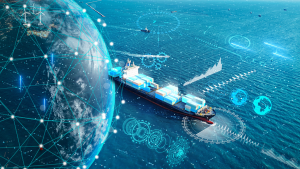A new report from Electricity Canada drives home the urgency of expanding Canada’s clean power resources to meet national decarbonization goals and identifies five barriers to reaching those goals.
The report, titled Build Things Faster, cites funding, planning, the existing regulatory and approvals process, workforce shortages and the limited capacity of permitting and regulatory bodies to assess applications as hurdles that must be overcome in short order.
“The biggest challenge is, we actually have to get on with building stuff,” said Francis Bradley, CEO of Electricity Canada, formerly the Canadian Electricity Association.
“There’s a variety of reasons why it is challenging, but fundamentally we need to get into building mode and get out of talking.”
The report notes the federal government has committed Canada to building a net-zero electricity system by 2035 to achieve a net-zero economy by 2050. Canada will have to take an “all-of-the-above” approach to non-emitting technologies, Bradley said, including more hydro, nuclear, small modular reactors, wind, solar storage and carbon capture.
Electricity Canada commissioned Dunsky Energy + Climate Advisors to write the report.
“I live in in Quebec, where for generations we’ve talked about wonderful hydro resources and the abundance of power,” said Bradley. “We have now entered into a period of time that nobody anticipated, where we’re talking about the need for energy efficiency because we’re running out of power.”
It has been estimated Canada will have to double its electricity generation by 2050 as well as build extensive transmission infrastructure. Hydro-Quebec says it will have to add over 100 terawatt-hours of additional electricity, more than doubling its current output.
“That sounds enormous. How can we double by 2050? Well, actually, if you do the math, it’s three per cent a year but it has to be every single year,” said Bradley.
He explained the electrification measures contained in the March 28 federal budget are important and transformative, “but it actually needs to lead to getting good projects moving forward and built.”
The budget calls for $20 billion to support the Canada Infrastructure Bank to prioritize clean electricity investments, and investment tax credits to support investments in priority areas including clean technology, electricity and manufacturing hydrogen.
In large part it is “a question of simply dollars and cents, and the federal budget does move into that space, and it begins to address some of the challenges around ensuring that, for example, a small number of customers in certain jurisdictions don’t bear the entire brunt of decarbonizing the Canadian economy,” said Bradley.
Right behind funding, though, is Canada’s approvals process. Bradley applauds that the federal government says it is moving towards a one-project, one-process regime.
“The problem isn’t necessarily the specific pieces of federal legislation that were updated a couple of years ago. It’s more of a challenge of the duplication of efforts in the multiple levels of government. And frankly, the inability of our regulatory processes to discern and to differentiate between good projects that are critical to meet our overall objectives, versus others that may not.”
Linked with this issue, the report said, is the limited capacity of permitting and regulatory bodies to assess and approve applications.
Looming over the whole transition is the need for capital.
“Projects need financing of credit-worthy parties and an effective market structure to facilitate returns over the long term,” stated the report.
A slow and uncertain process deters investors and encourages investment in other jurisdictions.
“To that end, interviewees pointed to the United States landmark Inflation Reduction Act as further evidence of a widening gulf between Canada and the U.S.’ competitiveness for capital,” the report stated.
Bradley said Canada has high levels of engineering talent and skilled labour, so expertise is not a concern — but capacity is.
“We got some of the best and most innovative companies in the world operating in Canada today. The challenge we have is, are we going to have the capacity to be able to build out what’s required?”
Bradley said the two-year-old Electricity Alliance Canada, with members including Electricity Canada, Waterpower Canada, Marine Renewables Canada, Electricity Human Resources Canada, the Canadian Nuclear Association and the Canadian Renewable Energy Association, has come together to work on the human resources issue.
Bradford said he is “absolutely confident” stakeholders will be able to meet the 2050 challenge, just as they did to rid Ontario of energy from coal and deal with the pandemic.
Follow the author on Twitter @DonWall_DCN











Recent Comments
comments for this post are closed